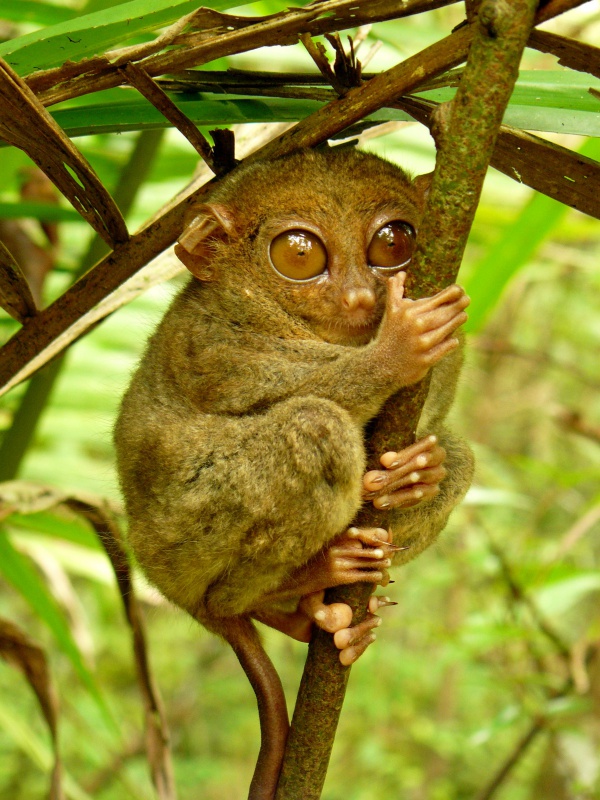Facts About Philippine tarsier
The Philippine tarsier, locally known as "mawumag" in Cebuano and other Visayan languages, is a diminutive primate endemic to the Philippines. As a member of the Tarsiidae family and the sole representative of the genus Carlito—named after the conservationist Carlito Pizarras—this remarkable creature can be found on several islands, including Bohol, Samar, Leyte, and Mindanao.
Measuring a mere 85 to 160 mm in height, the Philippine tarsier is one of the smallest primates globally. It is distinguished by its large, immobile eyes and a unique neck that allows its head to swivel a full 180 degrees. As nocturnal hunters, these creatures primarily feed on insects, spiders, small crustaceans, and even tiny vertebrates.
Philippine tarsiers are arboreal and predominantly solitary. They communicate through a range of vocalizations, ultrasonic frequencies, and scent markings. With a six-month gestation period, females typically give birth to a single offspring at a time.
Regrettably, the tarsier is significantly threatened by habitat loss due to deforestation, logging, and human encroachment. In response, conservation efforts such as the establishment of sanctuaries and the enforcement of protective laws have been initiated. Organizations like the Philippine Tarsier Foundation and Endangered Species International are dedicated to preserving this species.
Several conservation statutes, including DENR Administrative Orders and Republic Acts, have been enacted to safeguard the tarsier and its habitat. Although the International Union for Conservation of Nature (IUCN) classifies the Philippine tarsier as Near Threatened, ongoing issues like habitat destruction and the illegal pet trade continue to pose challenges. Raising public awareness, enforcing conservation laws, and preserving natural habitats are crucial steps for ensuring the survival of this unique primate.
